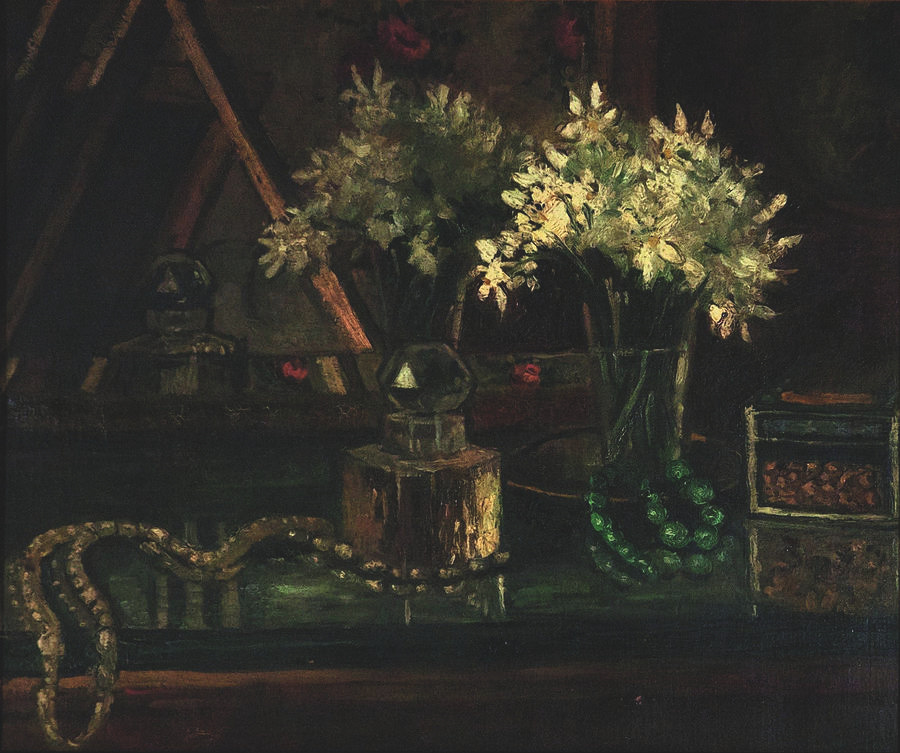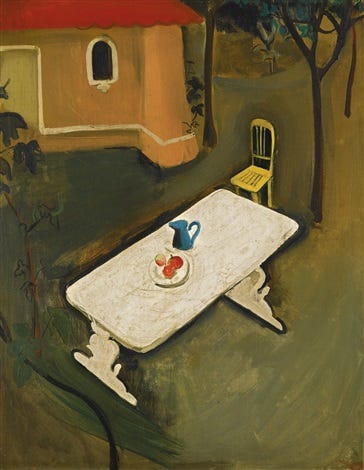I'm really sorry to say that there won't be an audio version available this issue My husband Michael (who also happens to be my audio engineer), has been busy playing shows with three different bands last month. It's super exciting and also meant that we couldn't find the time to record. I promise to bring back the audio version in the next issue. Thanks for being so understanding!
Illustration
Did you know that if you say the words “rabbit, rabbit” first thing before any other words on the first day of the month, you’ll have good luck? I learned about this bit of folklore tradition from The Farmers Almanac. This inspired my little illustration of rabbits looking at the moon since we were also treated to the final supermoon of the year last month.
Inspiration
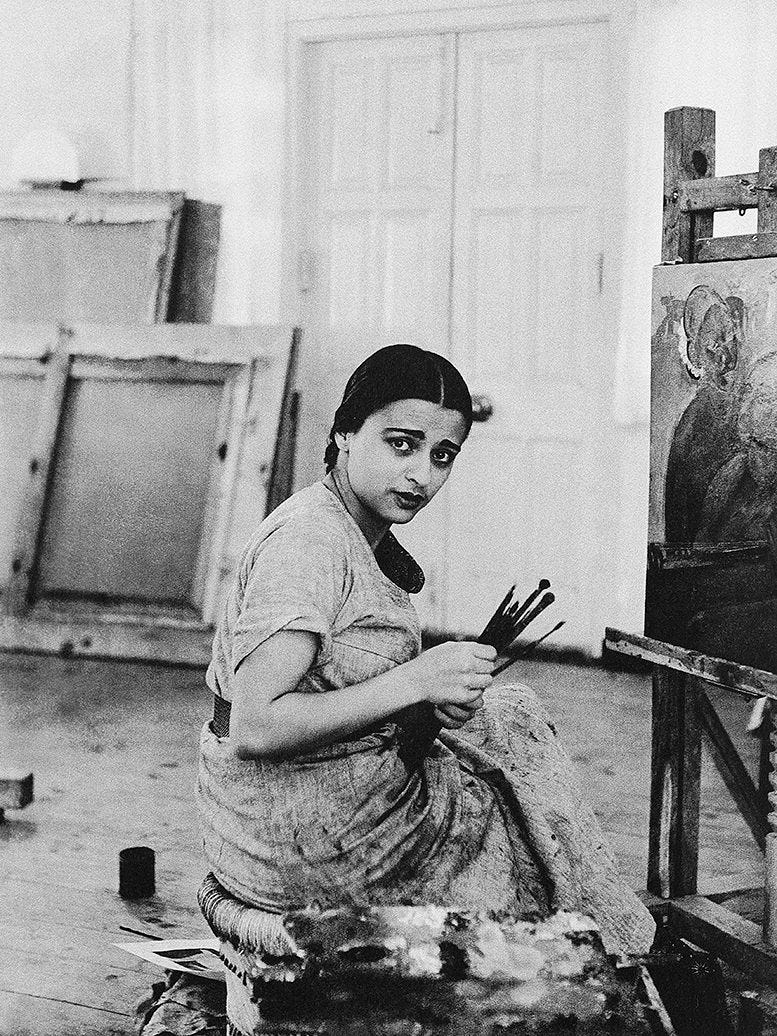
This issue’s inspiration is Amrita Sher-Gil, who, much like Les Trois Grandes Dames of Impressionism, painted the inner lives of women. While Impressionism depicted what would be considered mundane and many of the moments that make up our lives, Sher-Gil explored the daily lives of Indian women in the 1930s: their comings and goings, their daily lives at home, running errands and women in the company of other women. Her work showed great empathy and highlighted subjects often overlooked in painting.
Sher-Gil lived an extraordinary, fascinating, and tragically short life. Her parents were also artists: her mother was the Hungarian-Jewish opera singer Marie Antoinette Gottesmann, and her father was the photographer Umrao Singh Sher-Gil Majithia, a Sikh aristocrat and a scholar of Persian and Sanskrit.
She began taking art lessons at age 8 and spent her teens studying art in Paris. She was known to be “outgoing and sociable, as she was known among those who encountered her at Parisian parties, or tucked away and painting vigorously.”

She died at the age of 28 on Dec. 5, 1941. The cause was believed to be complications from a second, failed abortion performed by her husband Victor Egan.
In a letter to her mother in October 1931, Sher-Gil wrote: “I painted a few very good paintings. Everybody says that I have improved immensely; even that person whose criticism, in my view, is most important to me — myself.”
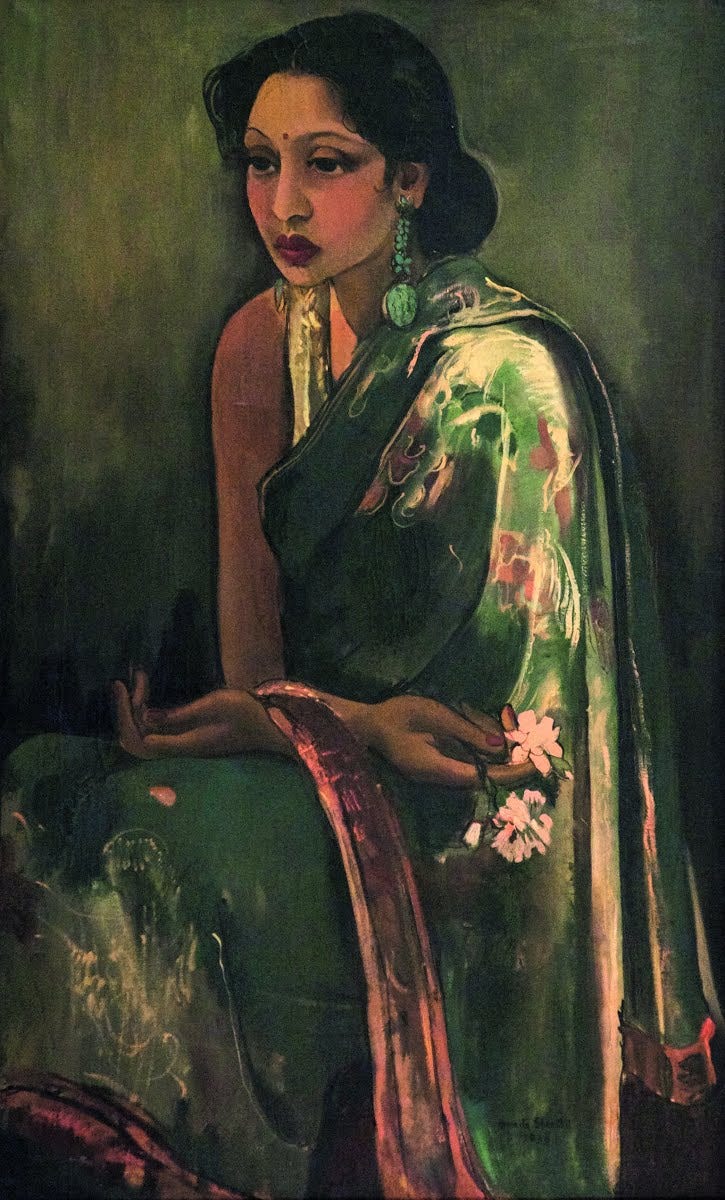
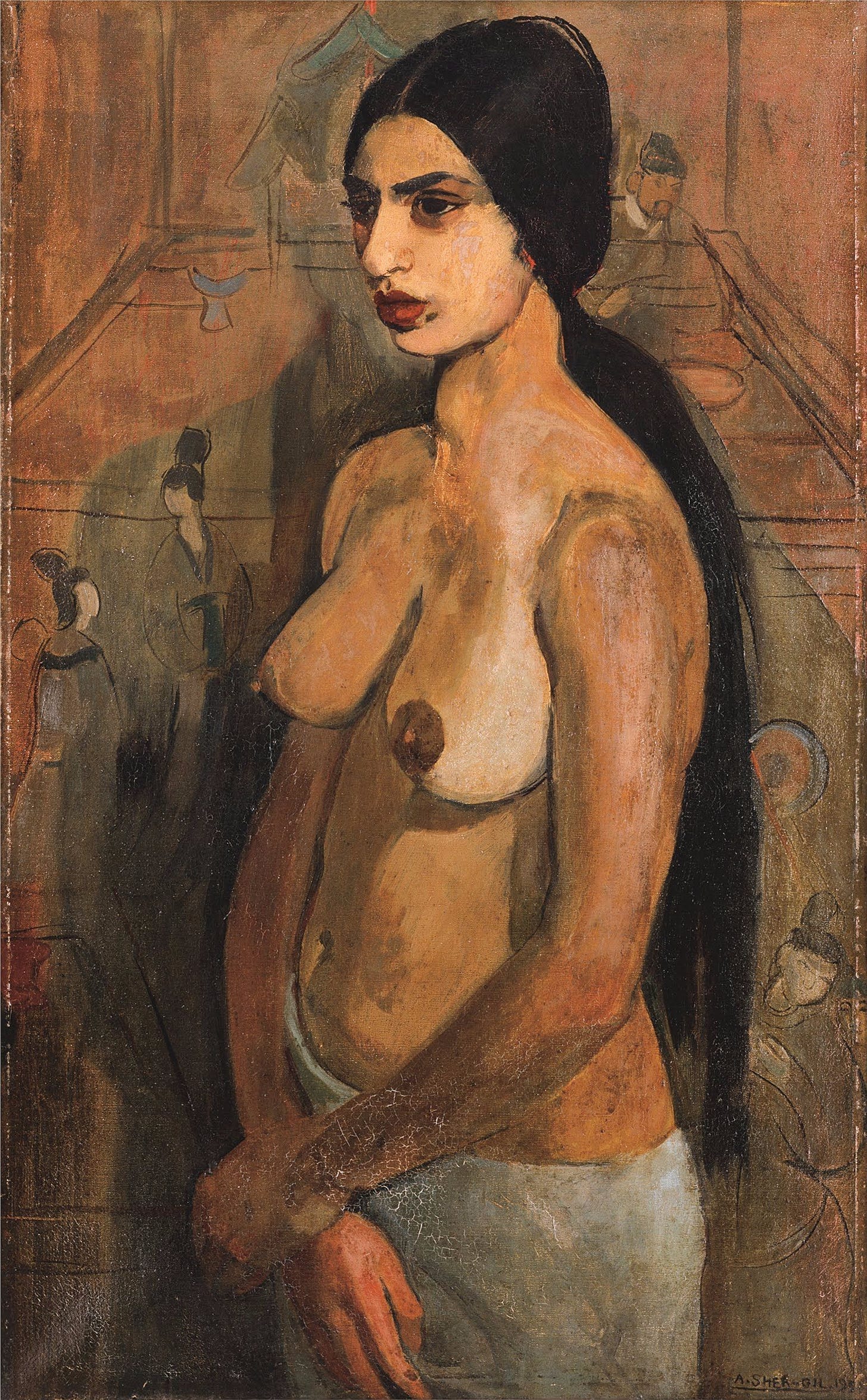
Related Readings:
India Art Fair: The female artists leading the country’s art renaissance
‘I am not made for marriage’: A new book explores Amrita Sher-Gil and Victor Egan’s relationship
Overlooked No More: Amrita Sher-Gil, a Pioneer of Indian Art
Ideas
Stunning shot of giant plasma arc scoops Astronomy Photographer of the Year 2023 I stared at these photographs for a long time. I dare you to look at these and not think about our Earth floating in this cosmos among all this beauty and wonder.
Want to 'feel something' when you look at art? Try these 6 tips This advice from NPR’s LifeKit I think perfectly complements an article I shared in a previous issue I shared an article about slow looking at museums. It’s valuable and practical advice for how to approach art in museums. It doesn’t need to be intimidating, and you don’t need an art history background to understand and appreciate works of art. You already have the tools you need: an open mind and some time to really look and pay attention. I try to see art of all kinds as much as possible, and there are pieces I spend more time with and others I don’t. I pay attention to how I feel and don’t feel pressure to look at every work, even though I’d like to; there’s just not enough time! “There's no right way to go through an art museum…so just follow your interests.”
#153: Rethinking “weekend plans” “We’ve been trained so well by tech and advertising to think faster is better, and provided with so many tools to accommodate that value system, that resisting convenience takes constant re-commitment. But I find that the more I practice making real, genuine plans out of errands, thereby embracing their slowness, the less I dread them, and the less I dread making weekend plans.” I feel like something happened coming out of lockdown, where it felt like we all had to make up for lost time and fill up our weekends, and it quickly, at least to me, became overwhelming. My job(s) for a while has been a standard Monday to Friday, and so I want to acknowledge it’s not like that for everyone, but I do think the lessons can apply to anyone who has a day or two off from work no matter what day of the week it is. That said, I recently realized that I needed to change how my weekends go. I asked myself why I was filling up my weekends. It felt more like an obligation than a “treat.” I figured out that I needed to make sure I had at least one day that I had no plans outside of the house to go slow, a day that I could think about art, read, write for this newsletter, and most crucially, draw and paint. Especially if I had a week where I could not work on much art during the weekday, it’s necessary for me to have one day where I can draw and paint freely with no agenda. I think, because my day job is in social media and the pace is like a treadmill that continually speeds up, I have to do the complete opposite during days off. This is just what works for me and may be very different for you, but I hope the article and my sharing are useful to you in some way. Another way to think about it with this excerpt from the article I found useful: “This is one effect of convenience culture: We can get things done so easily and predictably now that we have time to do more things in a day than we used to. But what are those things exactly? In Four Thousand Weeks, a philosophical book about time management by Oliver Burkeman, he explains something he calls “the efficiency trap,” whereby the more we do, the more there is to do. This is, of course, counter to the mythology of productivity, which tells us that the sooner we can get things done, the sooner we’ll be able to relax and enjoy ourselves.”
Ending Quote
I want to end with this poignant quote from Roman philosopher Seneca from On the Shortness of Life from 49 CE.
You must match time’s swiftness with your speed in using it, and you must drink quickly as though from a rapid stream that will not always flow… Just as travelers are beguiled by conversation or reading or some profound meditation, and find they have arrived at their destination before they knew they were approaching it; so it is with this unceasing and extremely fast-moving journey of life, which waking or sleeping we make at the same pace — the preoccupied become aware of it only when it is over.
-Seneca








